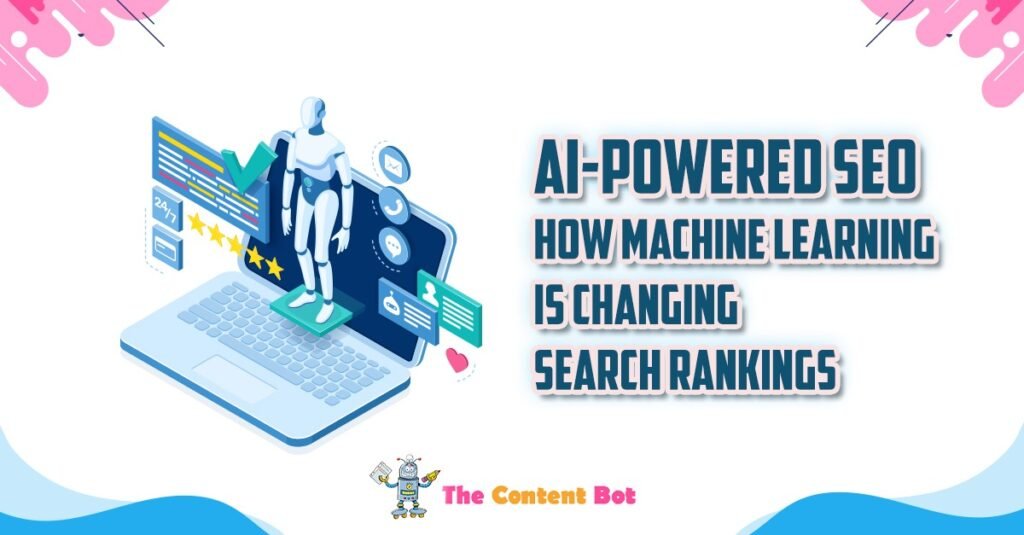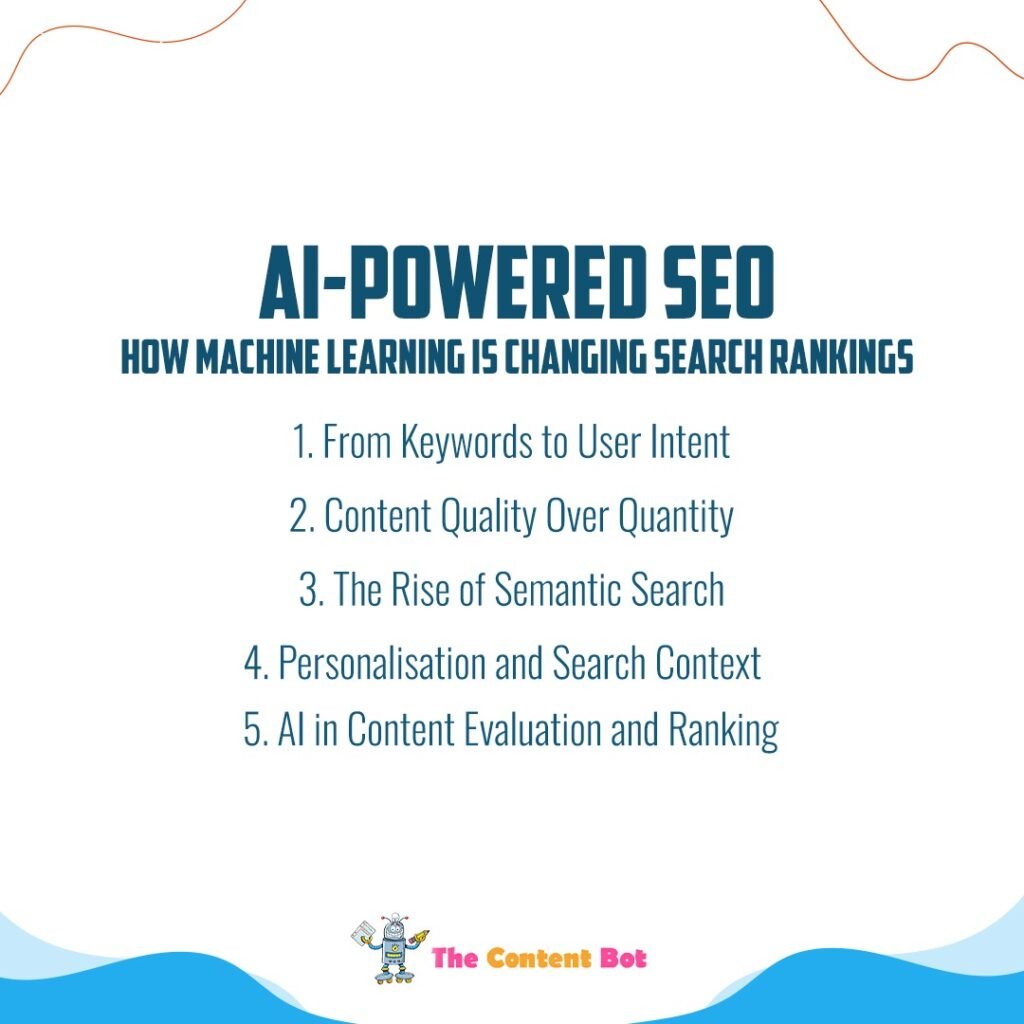
AI-Powered SEO 2025 Search engines are no longer simple keyword matchmakers. In 2025, AI and machine learning drive how content is discovered, ranked, and displayed. Businesses that still optimise for old-school SEO risk disappearing from results altogether. In this blog, we’ll explore how AI is reshaping search rankings, what it means for your content strategy, and how to adapt for long-term visibility.
1. From Keywords to User Intent
Traditional SEO focused on exact-match keywords. Today, AI algorithms like Google’s RankBrain and BERT understand context and intent behind queries. That means stuffing a page with “best digital marketing agency” won’t cut it. The winners are those who answer the why and how behind searches with meaningful content.
Key Insight: Search engines now prioritise intent-driven content over keyword repetition.
2. Content Quality Over Quantity
Machine learning systems can evaluate readability, depth, and even engagement signals like bounce rate and time-on-page. This means thin or duplicate content gets penalised, while in-depth, useful content climbs the rankings. Posting daily doesn’t guarantee success relevance and authority matter more than volume.
Key Insight: Quality signals drive rankings useful, original content always beats content churn.

3. The Rise of Semantic Search
AI connects words, phrases, and concepts instead of treating them separately. This is why related topics, synonyms, and context all matter. If your content only targets narrow keywords without covering surrounding themes, you risk being outranked by competitors offering a richer knowledge base.
Key Insight: Cover topics holistically to rank semantic depth matters as much as keyword targeting.
4. Personalisation and Search Context
Machine learning personalises results based on user history, location, and preferences. Two people searching the same query may see different results. This shifts the game from ranking “universally” to creating content tailored for specific audiences and locations.
Key Insight: Content must align with audience segments, not just general keywords, to appear in personalized search results.
5. AI in Content Evaluation and Ranking
Search algorithms increasingly use AI to detect patterns like unnatural backlinks, spammy tactics, and low-quality AI-generated text. At the same time, they reward authority-building credible sources, structured data, and user-first design. Businesses trying to “game” the system with shortcuts will fall, while those investing in authentic, data-backed content rise.
Key Insight: AI punishes shortcuts and rewards authority sustainable SEO means building credibility, not hacks.
How The Content Bot Can Help
At The Content Bot, we help businesses thrive in this AI-driven SEO landscape with content strategies designed for authority and long-term rankings. Here’s how:
- Intent-Optimised Content -We create blogs, guides, and landing pages that match real search intent, not just keywords.
- Semantic Content Structures -We build topic clusters and pillar pages that boost authority across entire subject areas.
- Technical SEO + Schema -We implement schema markup and structured data to help AI systems interpret your content better.
- Content Quality Frameworks -We design strategies that prioritise depth, originality, and engagement to signal quality.
- Audience-Centric Optimisation -We align your content with specific buyer personas for personalised search relevance.
- AI-Resilient SEO Plans -We future-proof strategies against algorithm shifts by focusing on credibility, not shortcuts.
With us, your brand doesn’t chase rankings it builds sustainable visibility in an AI-powered search world.
Frequently Asked Questions
- How is AI different from traditional SEO algorithms? AI understands context and intent, while older algorithms relied mainly on keyword matching.
- Does this mean keywords don’t matter anymore? Keywords still matter, but they’re only part of the puzzle. Intent, relevance, and semantic depth are now more important.
- Can AI detect AI-generated content? Yes. Low-quality AI-generated text often gets flagged. Human editing and authentic insights are essential.
- How does AI affect backlinks? It can detect unnatural link patterns. Only genuine, authoritative backlinks help rankings now.
- Should small businesses worry about AI in SEO? Yes, but it’s also an opportunity. With intent-driven strategies, smaller businesses can outrank larger competitors.
- How do I future-proof my SEO against AI changes? By focusing on authentic content, structured data, and authority-building instead of quick hacks.
Real-Life Scenarios
E-Commerce Store’s Semantic Win
An online store shifted from keyword-stuffed product blogs to semantic content clusters. Their organic traffic grew 60% in 6 months.
SaaS Firm’s Intent-First Strategy
A SaaS company created resources around “how to solve X problem” instead of pushing features. Their inbound demo requests doubled.
Local Business Personalisation Boost
A local service provider optimised for “near me” voice and contextual searches. Within 3 months, calls from Google Maps tripled.
Consulting Agency Avoids Penalty
A consulting firm relied on bulk backlinks and AI-churned blogs. After penalties hit, they rebuilt with authentic, long-form guides and regained rankings in 4 months.
Final Thoughts
AI is rewriting the rules of SEO. Search engines now reward intent-driven, high-quality, semantic content and punish shortcuts. The winners in 2025 will be brands that treat SEO as a long-term credibility game, not a quick hack. At The Content Bot, we help businesses adapt to this new reality with strategies that align with how AI evaluates content ensuring your brand stays visible, trusted, and ahead of competitors.

